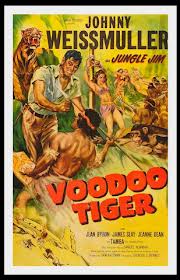
Sam Katzman was an American film producer and director. Katzman's specialty was producing low-budget genre films, including serials, which had disproportionately high returns for the studios and his financial backers.
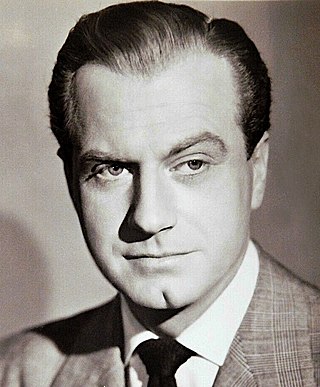
James Seay was an American character actor who often played minor supporting roles as government officials.

Jungle Jim is the fictional hero of a series of jungle adventures in various media. The series began on January 7, 1934, as an American newspaper comic strip chronicling the adventures of Asia-based hunter Jim Bradley, who was nicknamed Jungle Jim. The character also trekked through radio, film, comic book and television adaptations. Notable was a series of films and television episodes in which Johnny Weissmuller portrayed the safari-suit wearing character, after hanging up his Tarzan loincloth. The strip concluded on August 8, 1954.

Spencer Gordon Bennet was an American film producer and director. Known as the "King of Serial Directors", he directed more film serials than any other director.

Jungle Jim in the Forbidden Land is a 1952 American black-and-white adventure film directed by Lew Landers and written by Samuel Newman, and starring Johnny Weissmuller as the title character. This was the eighth entry in Columbia's "Jungle Jim" series. Angela Greene and Jean Willes also star.
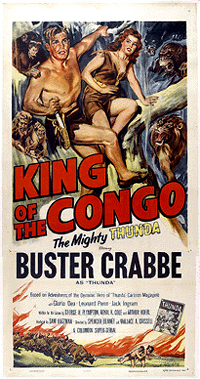
King of the Congo is a 1952 American 15 chapter movie serial, the 48th released by Columbia Pictures. It was produced by Sam Katzman, directed by Spencer Gordon Bennet and Wallace Grissell, and stars Buster Crabbe. The serial also co-stars Gloria Dea, Leonard Penn, Jack Ingram, Rick Vallin, Nick Stuart, William Fawcett, and Rusty Wescoatt. King of the Congo was based on the comic book character "Thun'da", created by Frank Frazetta, and published by Magazine Enterprises.

Jungle Manhunt is a 1951 adventure film written by Samuel Newman and directed by Lew Landers. It was the seventh entry in the "Jungle Jim" series of films starring Johnny Weissmuller as the title character. Based on the comic strip "Jungle Jim" created by Alex Raymond,
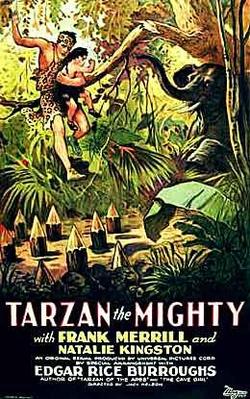
Tarzan the Mighty is a 1928 American action film serial directed by Jack Nelson and Ray Taylor. It was nominally based on the collection Jungle Tales of Tarzan by Edgar Rice Burroughs. The film is now considered to be lost.

Rick Vallin was an actor who appeared in more than 150 films between 1938 and 1966.

Jungle Jim is a 1948 American adventure film directed by William Berke and starring Johnny Weissmuller. It is based on Alex Raymond's Jungle Jim comic strip and was distributed by Columbia Pictures. It is the first picture in the Jungle Jim series that consists of 16 films originally released between 1948 and 1955.

Devil Goddess (1955) is the sixteenth and final Jungle Jim film produced by Columbia Pictures. It features Johnny Weissmuller in his third and last performance as the protagonist adventurer Johnny Weissmuller, and his final film as well. It co-starred Ed Hinton and William Tannen as the film's antagonists, Leopold and Nels Comstock, respectively. Angela Stevens also stars. The film was directed by Spencer G. Bennet and written by Dwight Babcock and George H. Plympton.

Jungle Moon Men (1955) is the fifteenth Jungle Jim film produced by Columbia Pictures. It features Johnny Weissmuller in his second performance as the protagonist adventurer Johnny Weissmuller. The film was directed by Charles S. Gould and written by Dwight Babcock and Jo Pagano.

Cannibal Attack is a 1954 American adventure film, the fourteenth Jungle Jim film produced by Columbia Pictures. The film features Johnny Weissmuller in his inaugural performance as the protagonist adventurer Johnny Weissmuller, a character previously called "Jungle Jim." The film also features Judy Walsh. It was directed by Lee Sholem and written by Carroll Young. Filmed at the Los Angeles County Arboretum and Botanic Garden, there are no cannibals in the film
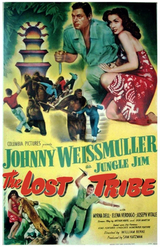
The Lost Tribe (1949) is the second Jungle Jim film produced by Columbia Pictures. The film features Johnny Weissmuller in his second performance as the adventurer Jungle Jim, co-starring Myrna Dell and Elena Verdugo, along with Joseph Vitale and George J. Lewis as the film's antagonists. It was directed by William Berke and written by Don Martin and Arthur Hoerl.

Fury of the Congo (1951) is the sixth Jungle Jim film produced by Columbia Pictures. It features Johnny Weissmuller in his sixth performance as the protagonist adventurer Jungle Jim. The film was directed by William Berke and written by Carroll Young.
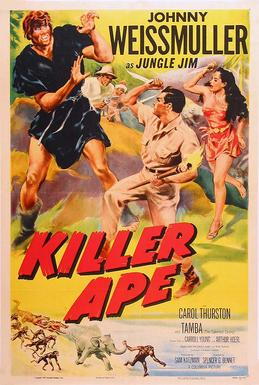
Killer Ape (1953) is the twelfth Jungle Jim film produced by Columbia Pictures. It features Johnny Weissmuller in his twelfth performance as the protagonist adventurer Jungle Jim. Carol Thurston also stars. The film was directed by Spencer G. Bennet and written by Arthur Hoerl and Carroll Young.
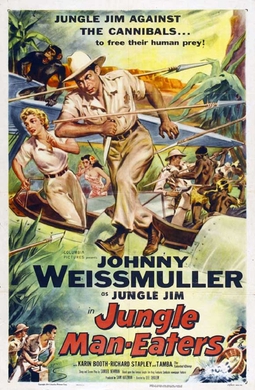
Jungle Man-Eaters is a 1954 American adventure film directed by Lee Sholem starring Johnny Weissmuller, Karin Booth and Richard Stapley. It was the last official Jungle Jim movie after Screen Gems bought the rights to make a TV series based on the character. With only three movies on his contract remaining, Weissmuller used them wisely by just playing himself, but the format stayed the same. Despite the title, there are no Jungle Man-Eaters shown in the film.

Captive Girl is the fourth Jungle Jim film produced by Columbia Pictures. It was directed by William Berke and starred Johnny Weissmuller as the title character. It was also Weissmuller's second teaming with his fellow former Tarzan and Olympic Gold Medal swimming champion Buster Crabbe after Swamp Fire (1946). The film was the only feature film appearance of Anita Lhoest who was a swimming champion and cellist.

Pygmy Island is a 1950 American Jungle Jim adventure film starring Johnny Weissmuller as the title character. It was movie number five in the series.
Valley of the Head Hunters is a 1953 adventure film directed by William Berke and starring Johnny Weissmuller in his eleventh appearance as Jungle Jim.
